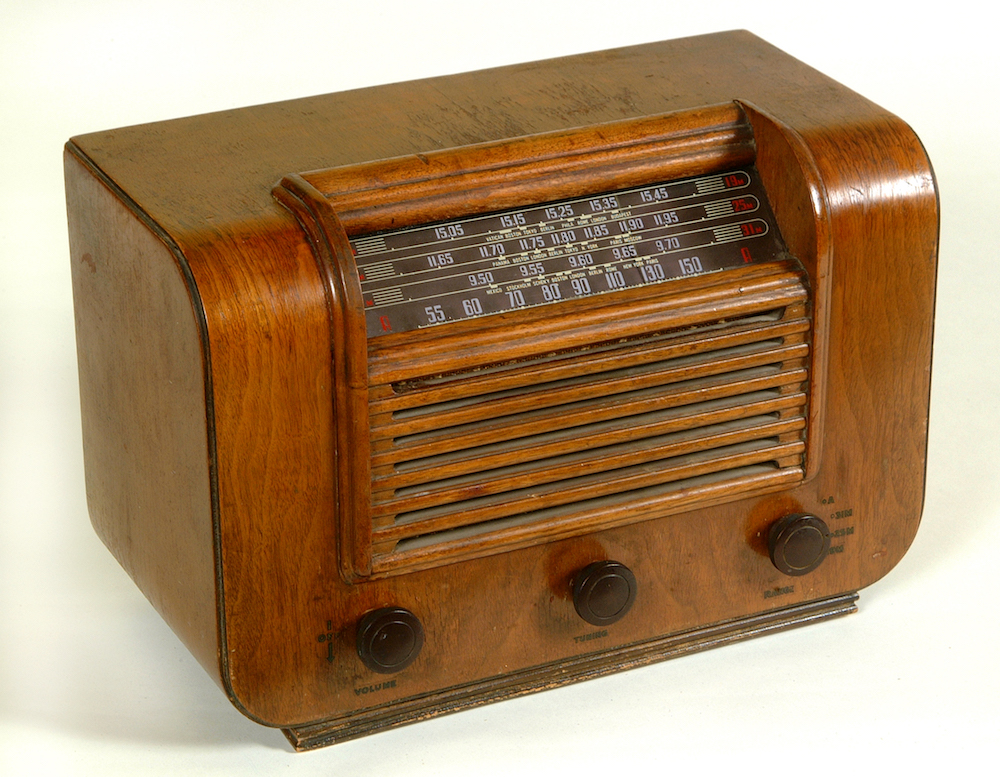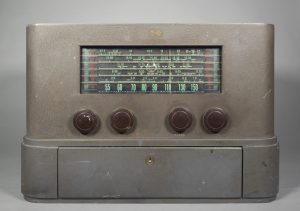Second World War
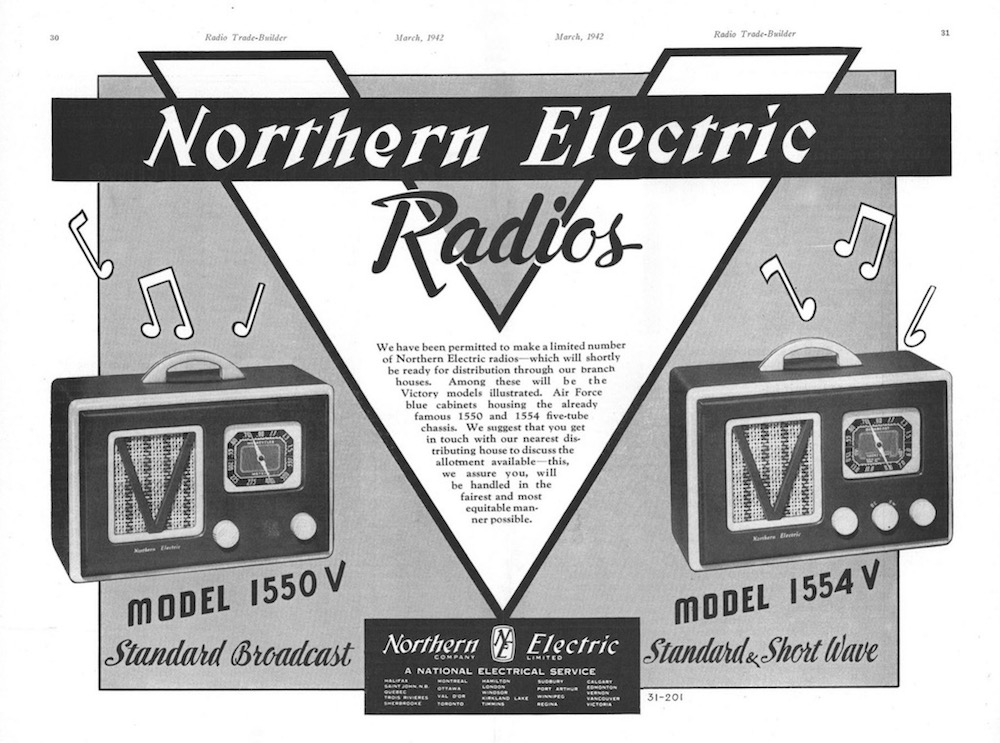
“Northern Electric Radios,” Radio Trade-Builder (March 1942): pp 30-31. La Société Québécoise des Collectionneurs de Radios Anciens (SQCRA).
Radio made war immediate. The declaration of war was heard around the world as each country entered the conflict.
The Second World War solidified Canada’s reputation for news and documentaries. For French Canada, Journalist Marcel Ouiment reported directly from the war-torn city of London, setting new standards in broadcasting. These clips remind us of how important radio was during this time of crisis and conflict.
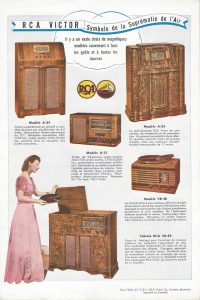
“Symbole de la suprématie de l’air” (Symbol of air supremacy), RCA Victor Co. Limited (1941). Brochure. Musée des ondes Emile Berliner.
U.S. American radio news fought a legal battle with the newspaper industry for control over the news. Until 1936, their news was limited to commentary. Canada had no such limitations. In fact, Canadian radio stations have featured news bulletins since 1922. They were also very important to the Canadian wheat farmers on the Prairies, who listened attentively to the market reports of wheat prices.
News bulletins were a regular feature of commercial radio and the practice continued with the CBC/SRC. A Canadian listener from a farm outside of Regina, Saskatchewan explained that the radio was a lifeline in the winter, when there wasn’t as much to do. During the war when she was away at teacher’s college in Regina, she and the other students listened every night for news of the war. The connection that radio offered listeners to the troops overseas cemented radio’s place in Canadian homes.
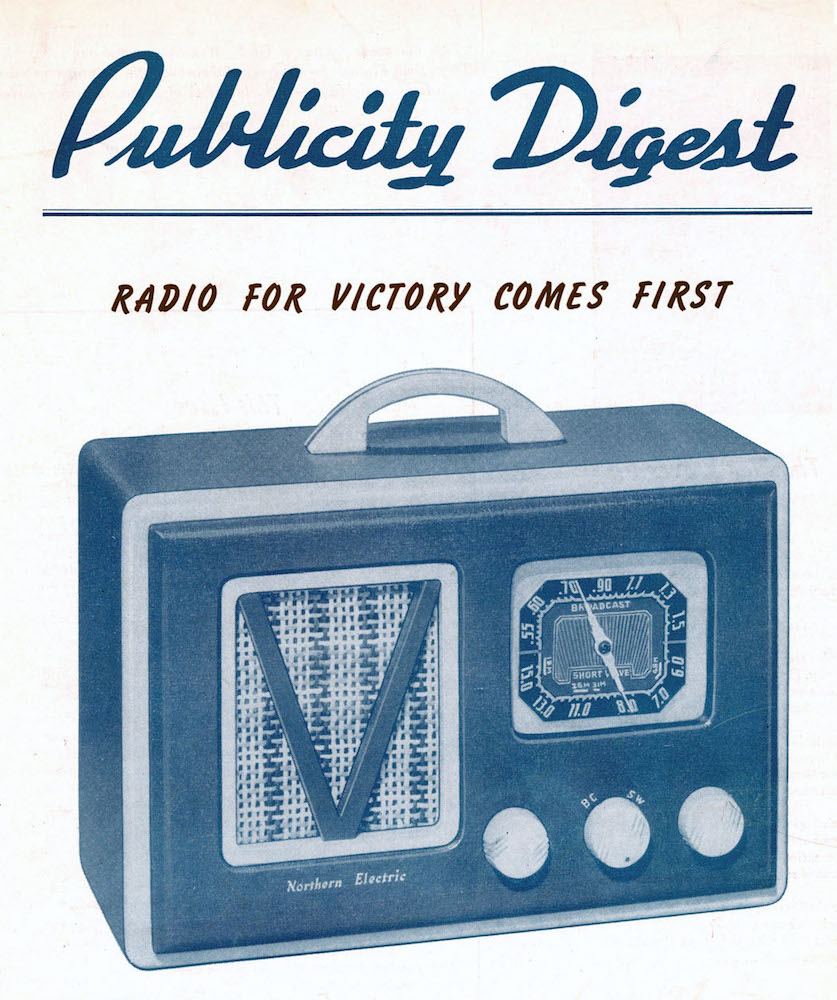
“Publicity Digest: Radio for Victory Comes First,” Northern Electric Company Limited (March 1942). La Société Québécoise des Collectionneurs de Radios Anciens (SQCRA).
Radio gave hourly reports. Families did not have to wait for newspapers or letters to get news from the front.
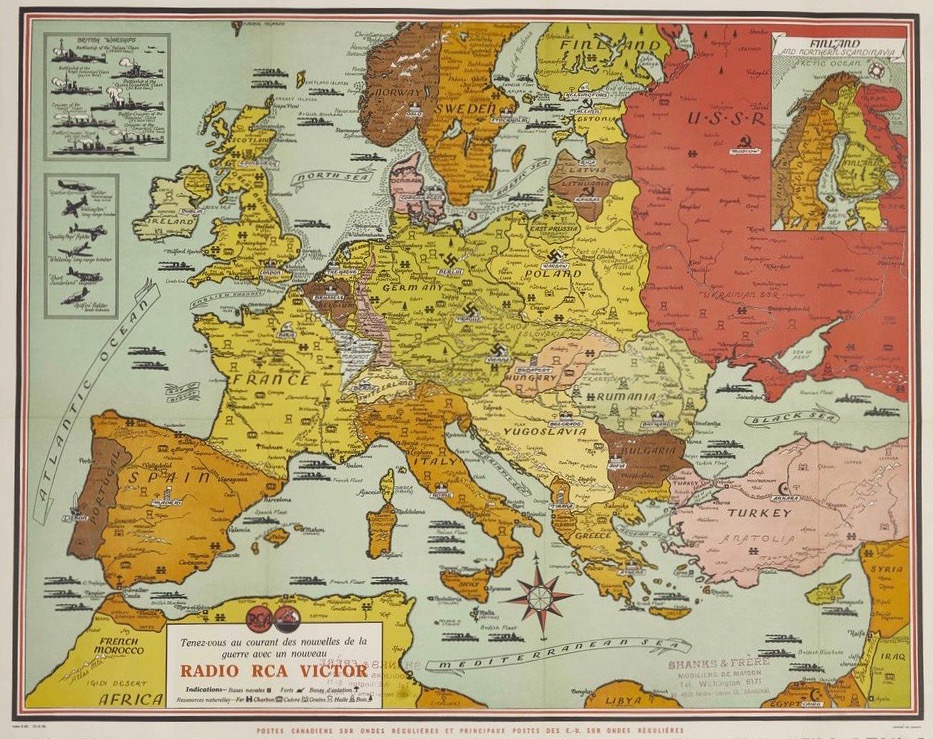
Geographic Map of Europe, RCA Victor (April 12, 1940), Montréal, Québec. 60cm x 74cm. Musée des ondes Emile Berliner.
During the war, Canadian manufacturers produced radio equipment for military use. The navy aboard ships could use this RCA Victor SRE Type 457. Meanwhile, the British developed Signal Corps radio wireless equipment for desert warfare. In 1942, Northern Electric Co., Canadian Marconi Co., and RCA Victor in Canada manufactured the No. 19 Mk II (below).
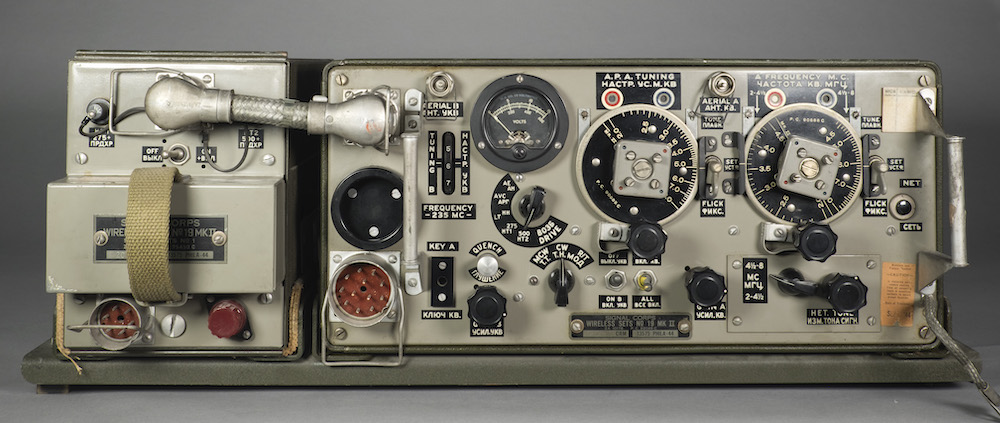
Military Radio, Signal Corps: Model ZA 10178 (1944). 30 x 61 x 23.5cm. Musée des ondes Emile Berliner.
Canadians were proud of their ability to continue to manufacture radios for communication at home and the military. The patriotism came with mixed reactions as the government put radio regulations into place to remove languages from combatant enemy countries from the air. For instance, radio stations removed long-standing German programs from the airwaves in Manitoba. Finnish religious services were also taken off the air.
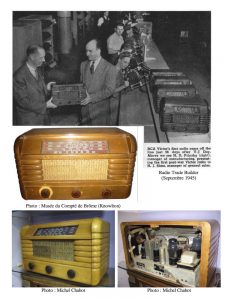
Radiophilie Québec 11, no. 5 (Sept-Oct 2005): pp 9. La Société Québécoise des Collectionneurs de Radios Anciens (SQCRA).
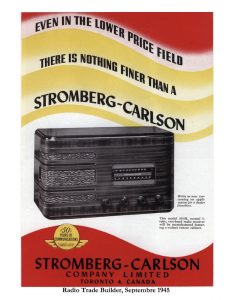
Stromberg-Carlson model 553H, as seen in Radiophilie Québec 11, no.5 (Sept-Oct 2005): pp 20. La Société Québécoise des Collectionneurs de Radios Anciens (SQCRA).
As the war drew to a close, Canadian radio manufacturing and broadcasting stayed intact as industries. At the same time, radio took on a more prominent role in Canadian homes and hearts.


